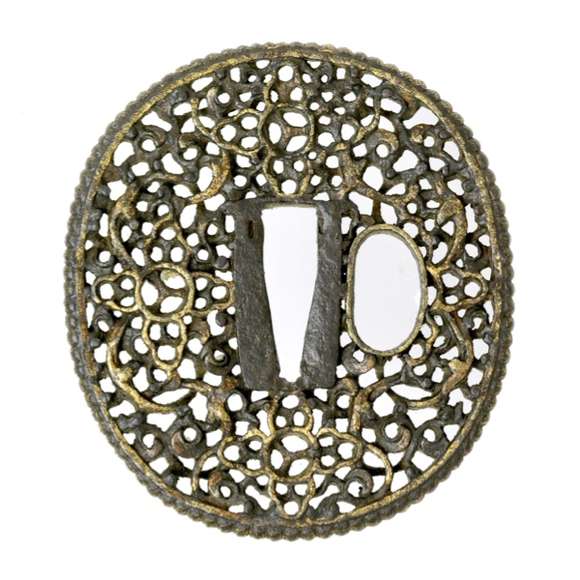A very rare Chinese saber guard dating from the height of the Qing dynasty.

29.5 cm
Over middle line 25.5 cm
Upper (without pockets): 19.2 cm
Middle (without pockets): 17 cm
Lower (without pockets): 16 cm
Height 21.5 cm
Width 10.5 cm
686 grams
Introduction
From my personal collection. A quiver that was once worn at court ceremonies by high ranked officers and imperial guardsman that protected the emperor of the Qing dynasty: The man who ruled an empire that once governed a third of the world's population.
The quiver is of the short, open style that spread the arrows out like a fan. These are called sādài (撒袋) or "dispersing bag" in Chinese and jebele or "right hand" in Manchu.1
It belongs to a group of Qing quivers with strong Tibetan influence, primarily in the cross-straps on the front held by the circular fittings, and the triangular bottom plate. Otherwise, the size and overall shape are purely Manchu. They generally go together with a bowcase of the same colors and materials, styled like a dragon carp.
The earliest known example of the style of cross-strapped quiver am aware of is in the Metropolitan Museum in New York, accession number 2003.344a–c. It is thought to be Tibetan or Mongolian, dating from the 15th - 17th century. Judging from the size of the set, they were used for the large Manchu style bow. The most common example of cross-strapped quivers are from the Tibetan plateau, where they were the standard type of quiver. These are typically long and narrow compared to their Mongolian and Manchu counterparts.
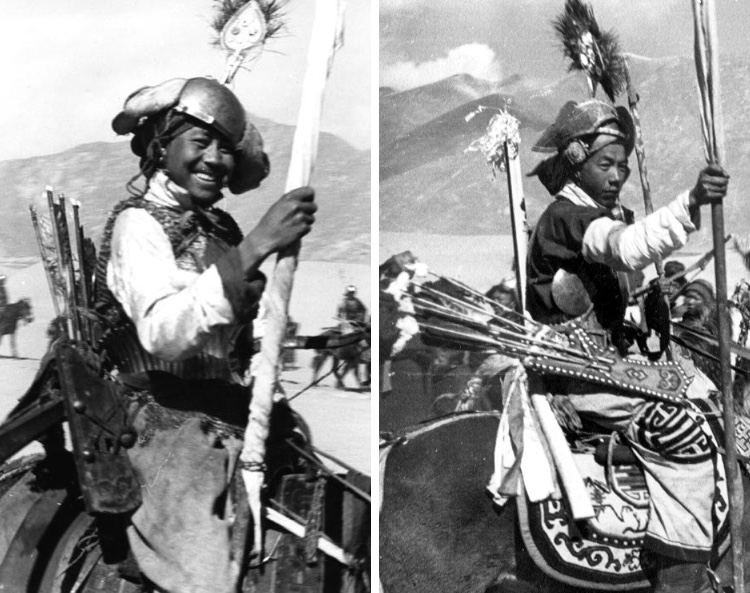
Antique Tibetan quivers were still worn at special occasions into the 20th century.
Here two examples showing the typical Tibetan cross-strapping.
Left: Lhasa, New Year's Parade, 1938 / 1939. Right, Tibetan Cavalry in Lhasa in 1942.
From Fe doro - Manchu Archery.
The adaptation of the design was probably initiated by the Qianlong emperor (reigned 1736 - 1796). A devout Tibetan Buddhist himself, his helmet carried Sanskrit holy texts and he also had special Tibetan styled swords made for his guards to wear at auspicious ceremonies. The earliest actual example of such a quiver that I am aware of is attributed to the Jiaqing emperor, the son and successor of the Qianlong emperor.2
Most examples in various collections today seem to date from the first half of the 19th century. They come in a variety of colors and materials, the most common type of tooled leather, such as this example we sold a while ago. Several have turned up with velvet over the leather, such as this one. Due to the amount of silk it required, and the intricate method of weaving, velvet was one of the most expensive fabrics in the pre-industrial age.
This example
A quiver of the imperial guard of the early 19th century, probably under the Jiaqing or Daoguang emperors. Made of rawhide, with a wedge shaped wooden base and wooden upright support on the left side. The rawhide and wood is covered on all sides with what was once maroon colored velvet. Like most of these quivers that survived up to today, it has lost the majority of its silk pile, exposing the linen base to which it was once attached. The original velvet remains intact under the cross-straps and on the back. On the back of the quiver are the three pockets characteristic of Manchu quivers, they were made to hold special arrows.
Decoration
The quiver is clad with bronze fittings, richly gilt using the fire gilding method. Its five large bats represent the five blessings in life: wealth, health, longevity, family, and a quiet death. The large round fittings depict archaic kui dragons in foliage. The center fitting is decorated with a stylized shou character for longevity. In the upper right corner we see a vase with three halberds, a pun in Chinese for "rising three ranks in the examinations"; the highest promotion attainable. These quivers used to accompany a bow case with a large fish on it, the mythical "dragon carp" that became a dragon on it's 100th birthday. This design is even incorporated into some armours of the period.
Color
These quivers came in red, black, dark brown and a pattern of interlocking Y's named suǒzijiǎ (索子甲), literrally "ring armor" or "mail"). Which color was worn depended on both the rank of the wearer and the occasion.3
These regulations were strictly adhered to in the 18th century, primarily under Qianlong, but although they were reprinted until 1899 the later quivers (and bowcases) seemed to accord to different regulations. We know from the uniformity of this later equipment that there has to be another set of regulations, but I have not been able to find them yet.
The maroon color, like this one, is the rarest color of them all. The color is not mentioned in any of the 18th-century regulations. It may have been for a special occasion, or for a special rank, but one high enough that he also attended palace ceremonies in full military equipment.
Other known examples
This quiver is part of a group of quivers in some notable collections:
A dark brown one in the Royal Armories, Leeds. On display.
A black one in the Stephen Selby collection. Previously on loan to the Hong Kong museum of Coastal Defense. Now in storage.
A red example in a New York private collection. (Sold through me.)
An example covered with silk broke in a pattern called "suǒzijiǎ", ex Karl Zeilinger collection, recently sold at Hermann Historica, lot 3043. Current whereabouts unknown.
Condition
As is common on well-used velvet items this old, the fabric lost most of its silk pile, exposing the linen base to which it was attached. Some insect damage to the fabric, a small patch on the lower front and some patches on the back behind the pocket. Some losses of the dark finish to the leather piping and lining. Two gilt nails missing, all major fittings present, no significant wear to the gold. It retains it's three back pockets, plus the rings for the straps to counterbalance the quiver, both often missing on other antique examples. Some damage to the bottom of the pockets. Blue cords are not original. All losses and damage clearly shown in the pictures below.
Conclusion
A wonderful of example of a rare Qing cross-strapped quiver, showing the strong Tibetan influence there was on Qing court regalia. It is the only example known to me that was originally maroon colored. It retains its three back pockets and with all major fittings present and intact, the thick gold still shines as bright as ever. This rare quiver was worn by a guard or officer in one of the most powerful land empires of the time. It will be an asset to any advanced collection of arms and armor or ceremonial regalia of the Qing court.
Notes
1. See the 御製五體清文鑑 or "Five Language Compendium", military section. Published 1794. While meaning quiver on its own, in some regulations, the Chinese term sadai is used to refer to the complete set of bowcase, quiver and belt.
2. It is held in the Palace Museum in Shenyang and published in a catalog titled 大清盛世 (daqing shengshi or "The life of the Great Qing").
3. See the Qianlong era Huangchao Liqi Tushi (皇朝禮器圖式), or "Illustrated Regulations on the Ceremonial Paraphernalia of the Dynasty". Printed in 1766, based on a 1759 manuscript. It was reproduced again in 1801 and 1899 in the 大清會典圖, even though the court did not adhere to its contents anymore. Colors in regulations according to the 1766 Huangchao Liqi Tushi:
Imperial Grand Ceremony Guard: Black Japanese satin.
When riding out for sacrificial ceremonies and court assemblies.
Imperial Auspicious Ceremony Guard: Gold and silver silk brocade with red and blue precious stones.
When riding out for auspicious ceremonies. This is the equipment to be worn with the auspicious apparel.
Imperial Guard Set 1: Unadorned black leather.
For imperial touring outside the capital.
Imperial Guard Set 2: Vermillion leather with gold and silver embroidery
When riding out to the Yuanmingyuan and while returning to the Imperial Palace from there. On imperial ring hunts, when clearing the streets for the imperial progression, when the emperor returns to the capital.
Imperial Guard Set 3: Black cotton with silver embroidery.
At festival days, new and full moon, when riding out.
The suǒzijiǎ style
Suǒzijiǎ refers to silk brocade with a pattern of interlocking Y's, in imitation of archaic armor. Although no bow cases and quivers of this type are described in any of the regulations, they do turn up among antiques. An example of a Qing quiver with suǒzijiǎ pattern, from the Karl Zeilinger collection, was recently sold at Hermann Historica, lot 3043.
They were most likely made for princes of the Qing court, because we do know from the regulations that suǒzijiǎ type ceremonial armor was exclusively for the three princely ranks of Qinwang, Junwang and Beile. These were the highest ranks under the emperor, being sons, brothers, uncles and cousins of the emperor by blood. The emperor could also bestow such titles on men who were not related. There is a suǒzijiǎ style ceremonial armor in the Brooklyn Museum under accession number 34.1386a-f that shows that in the late Qing the bow cases and quivers were indeed en suite with this style of armor.

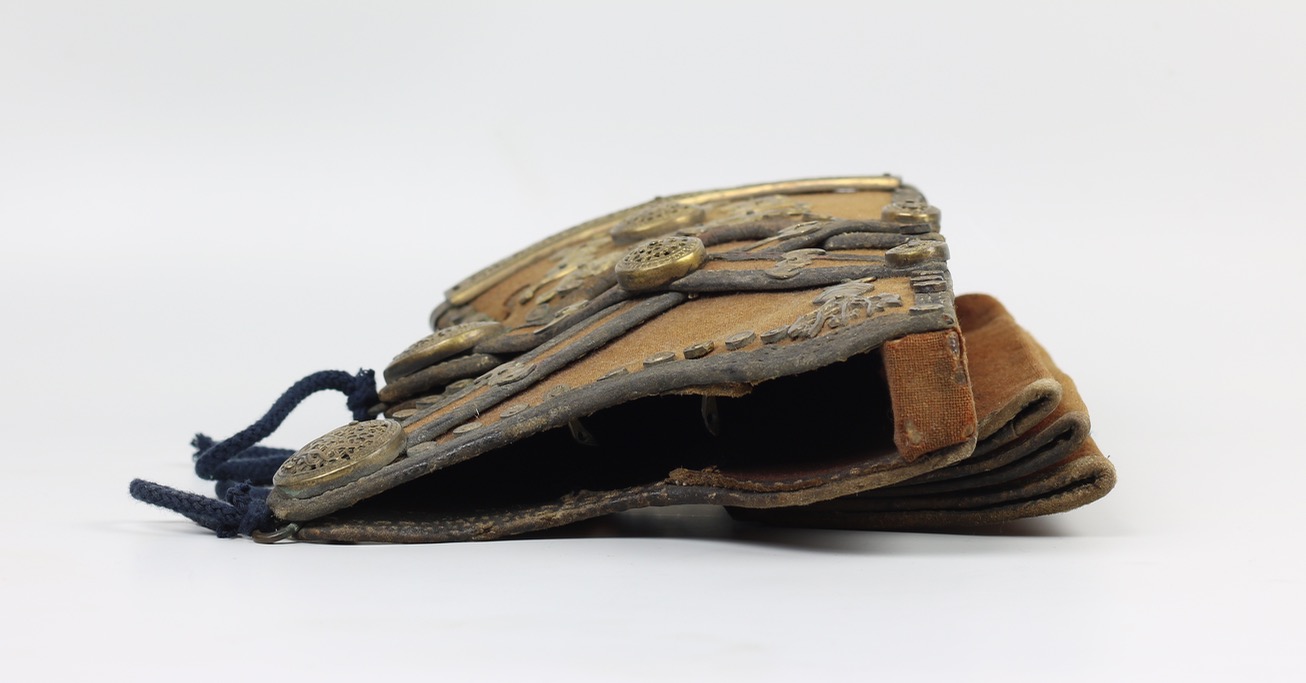
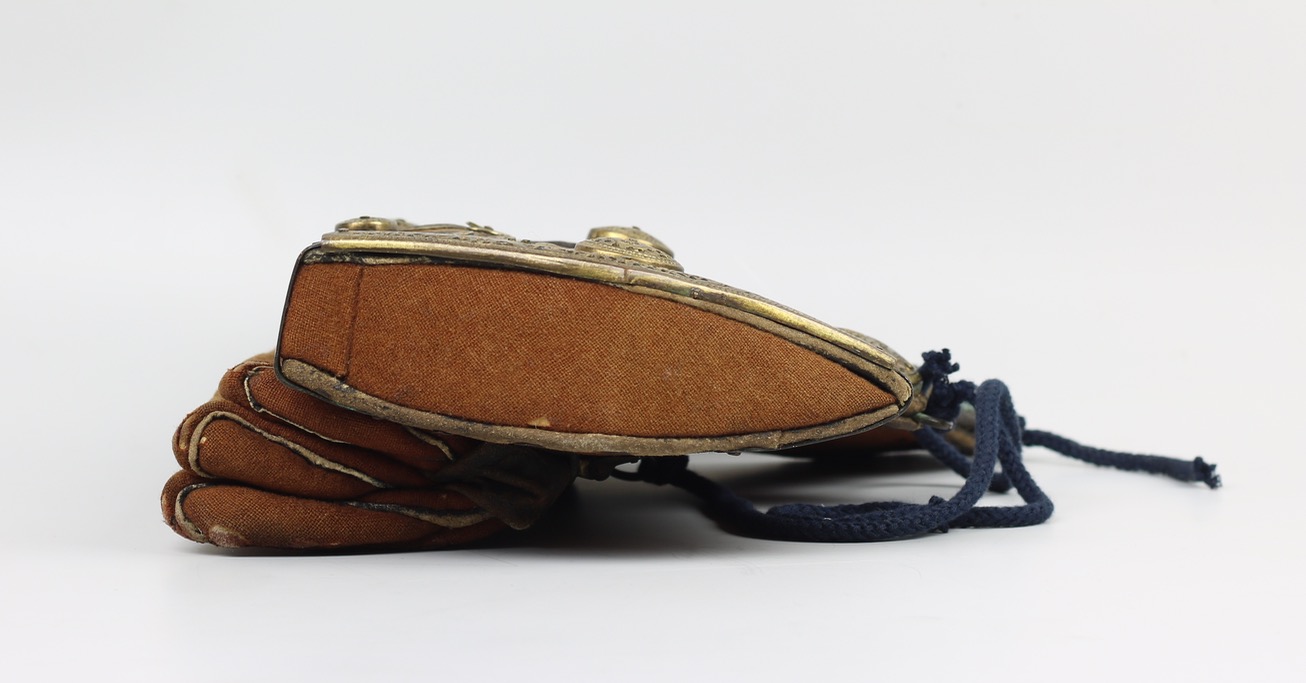
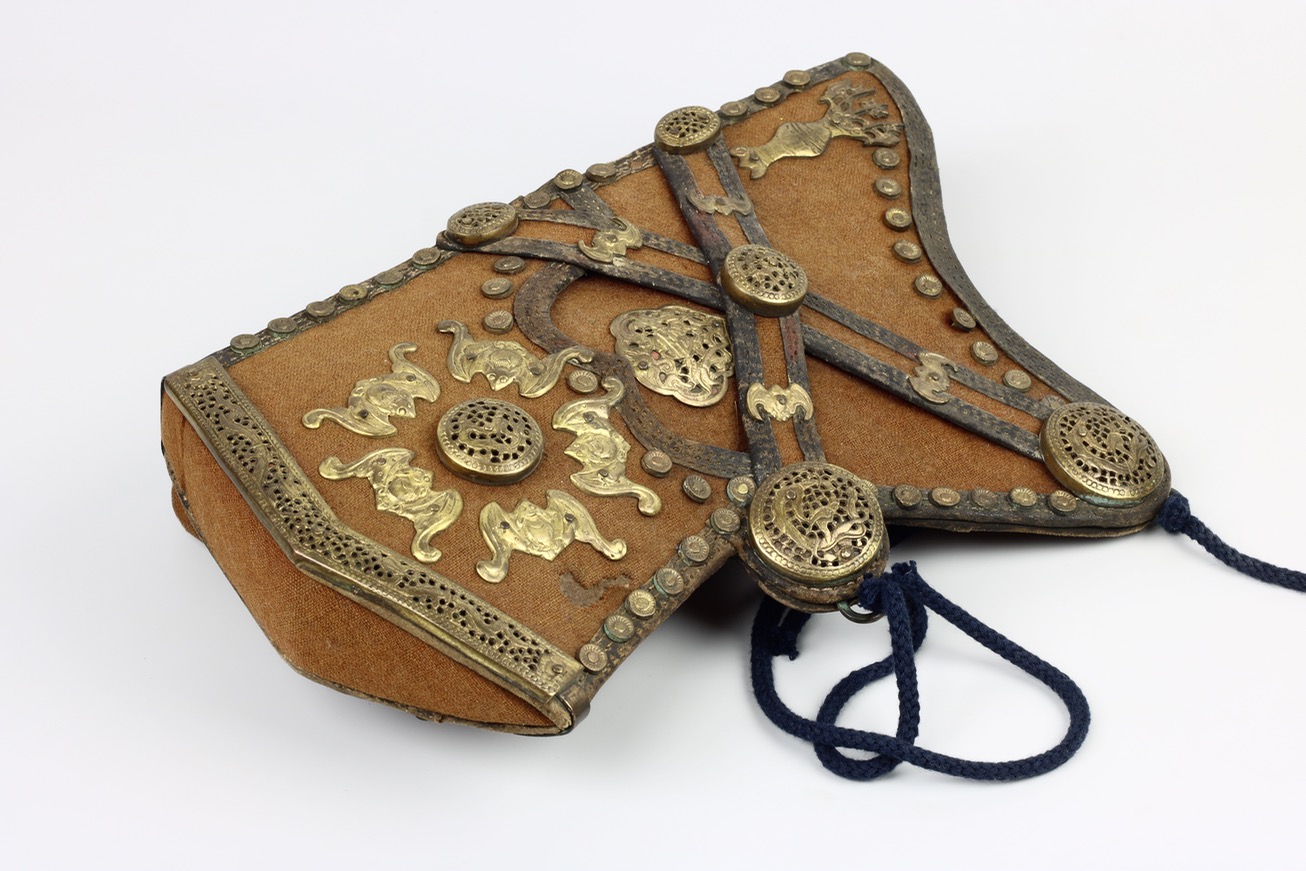
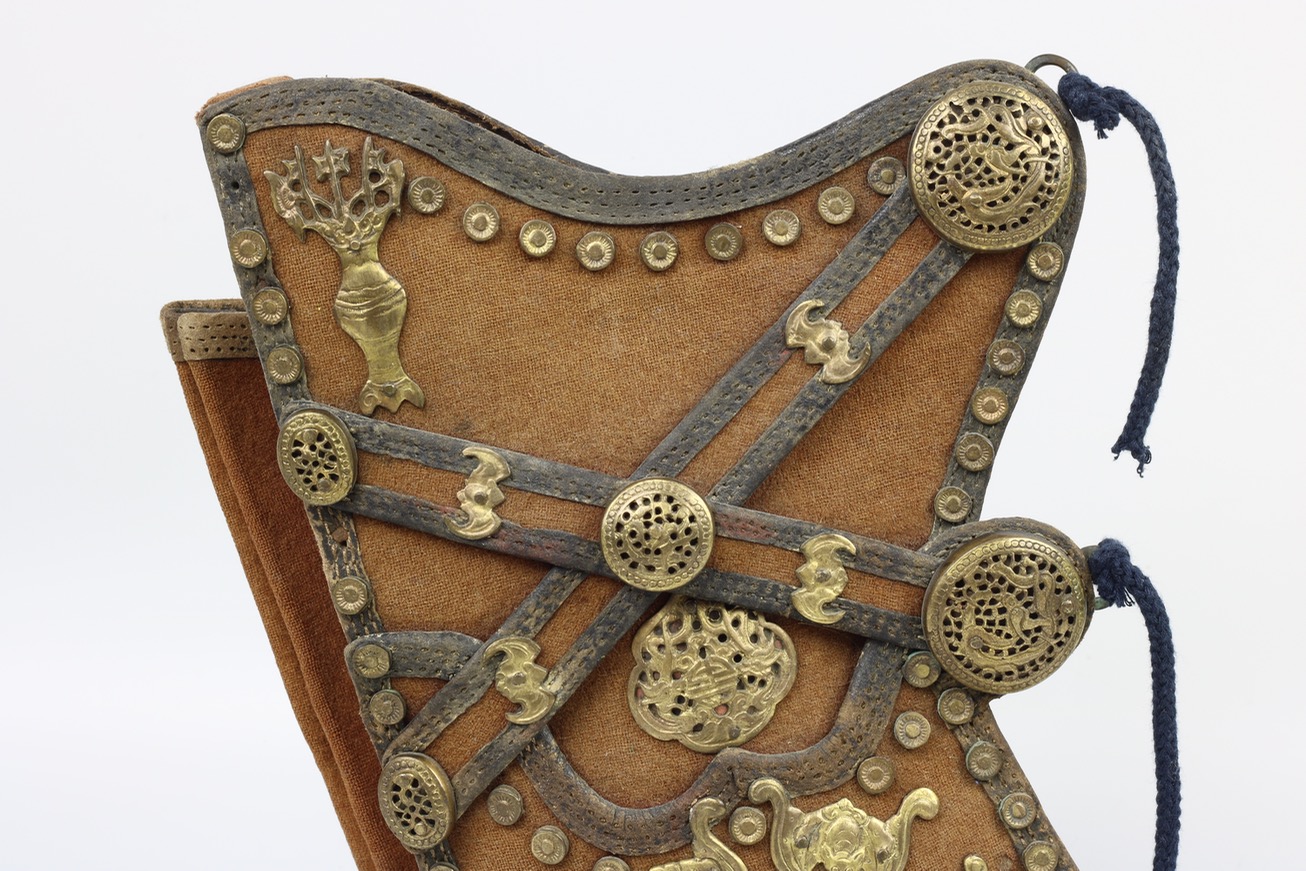
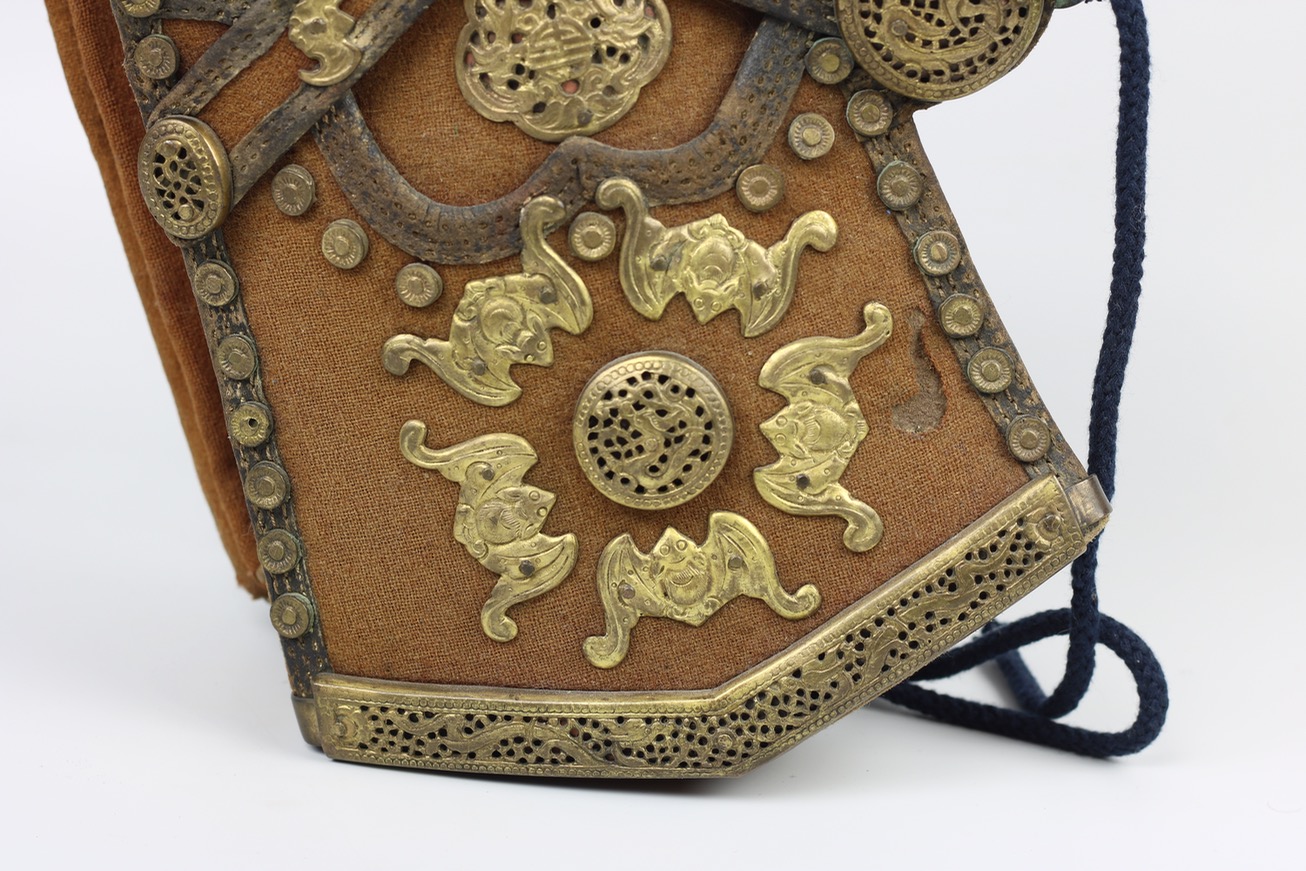



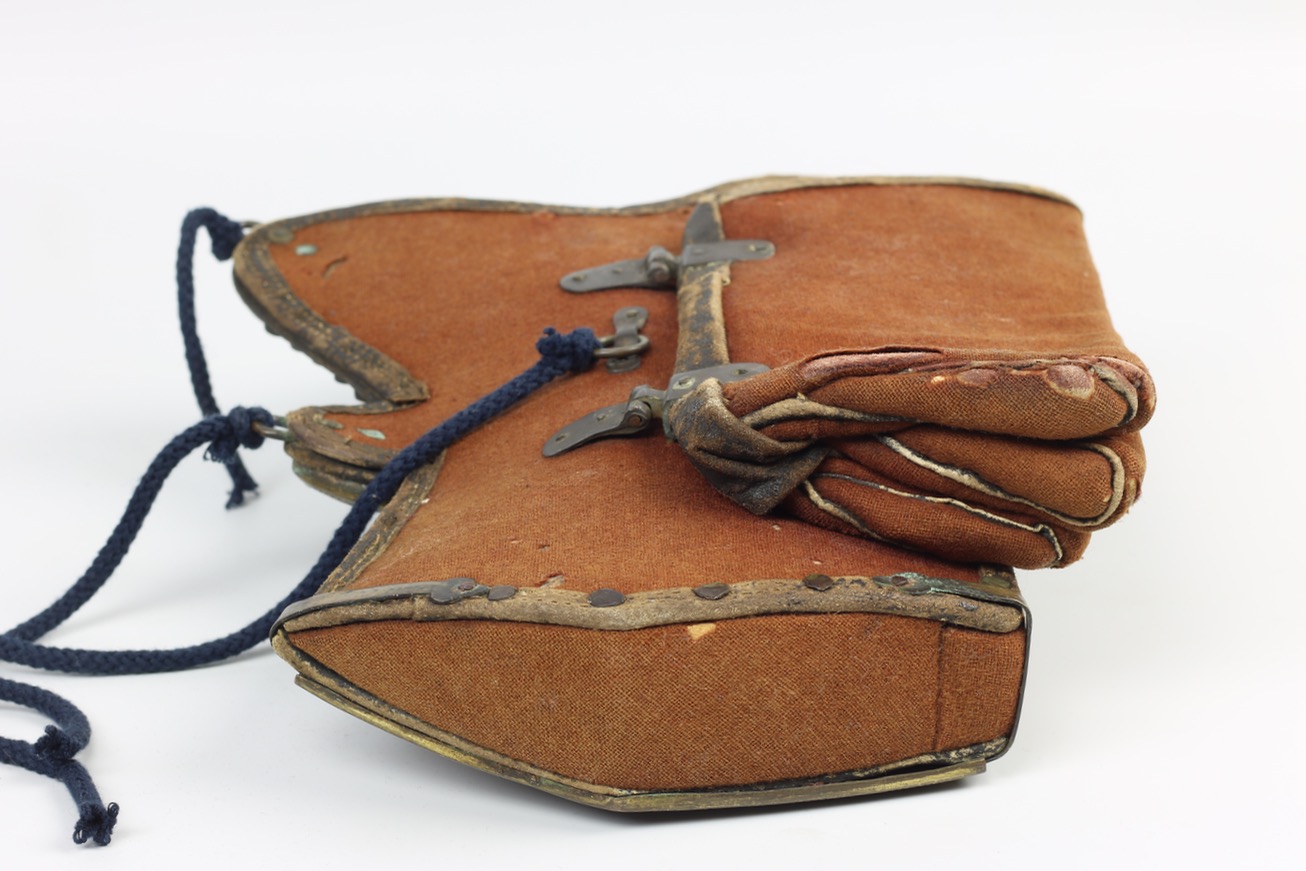




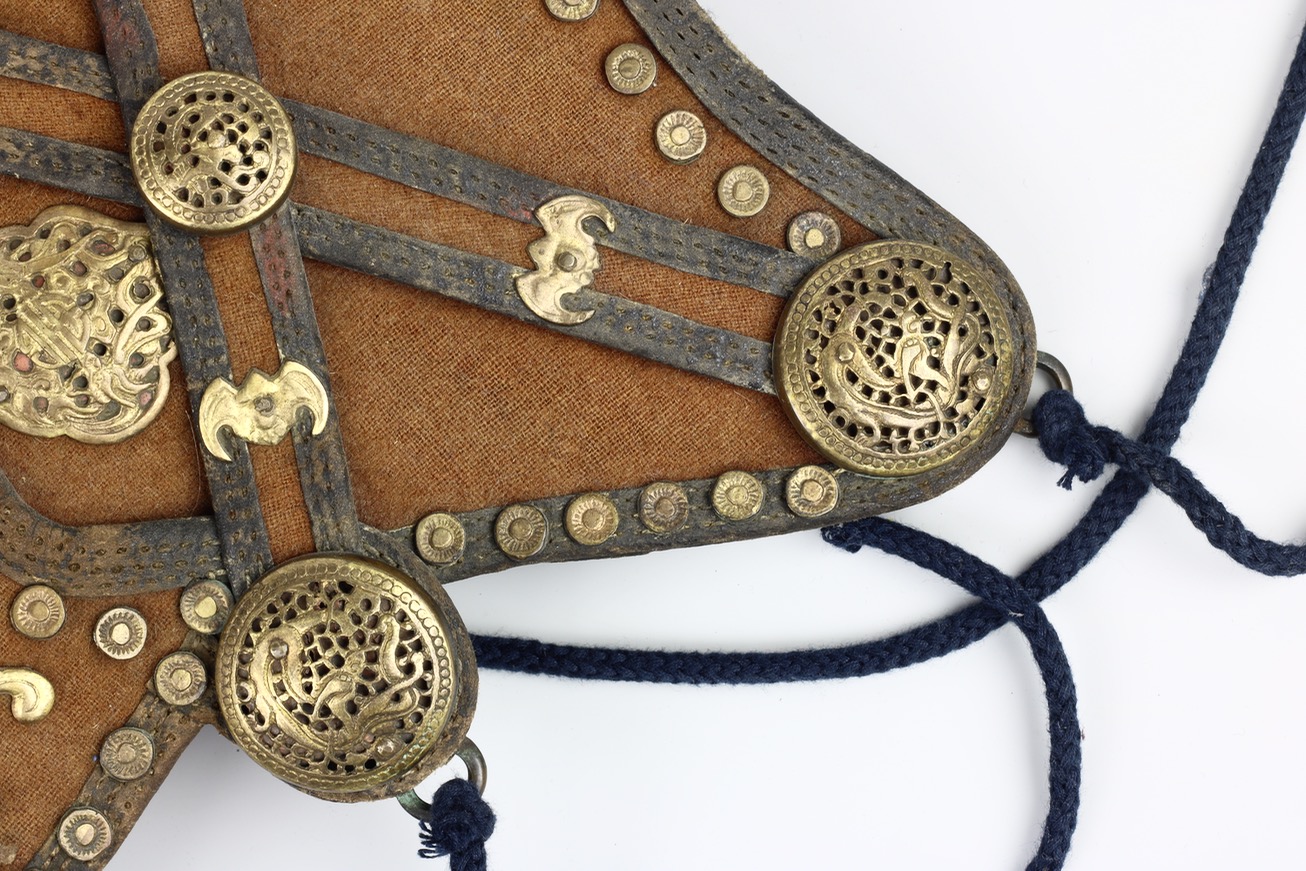
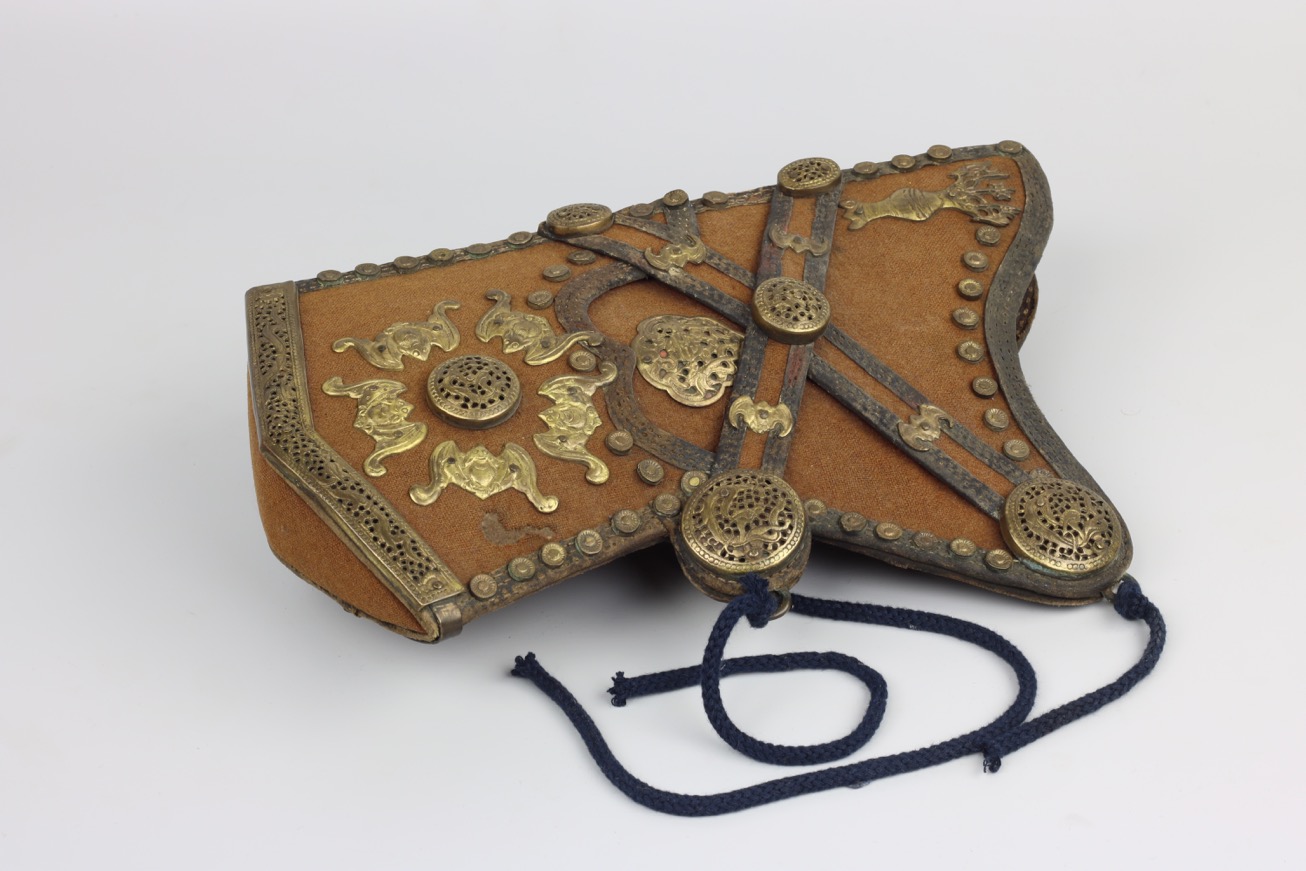


Of classic shape, with a leaf-shaped blade on a socket, connected by a cast bronze base.
A standard pattern Qing military saber, but with the rare addition of a label in Manchu.
A simple utilitarian weapon, probably made for rural martial artists or militia.
In the style of northern work of the 16th and 17th centuries
Probably of Southern origin, with a straight blade and flaring tip.

